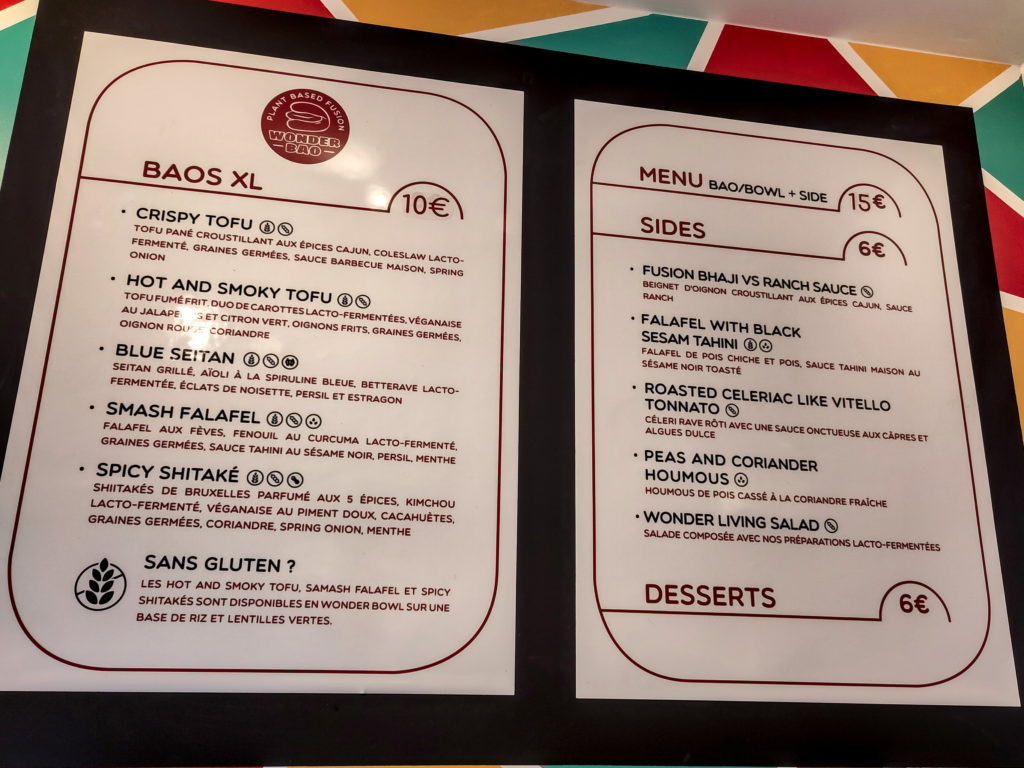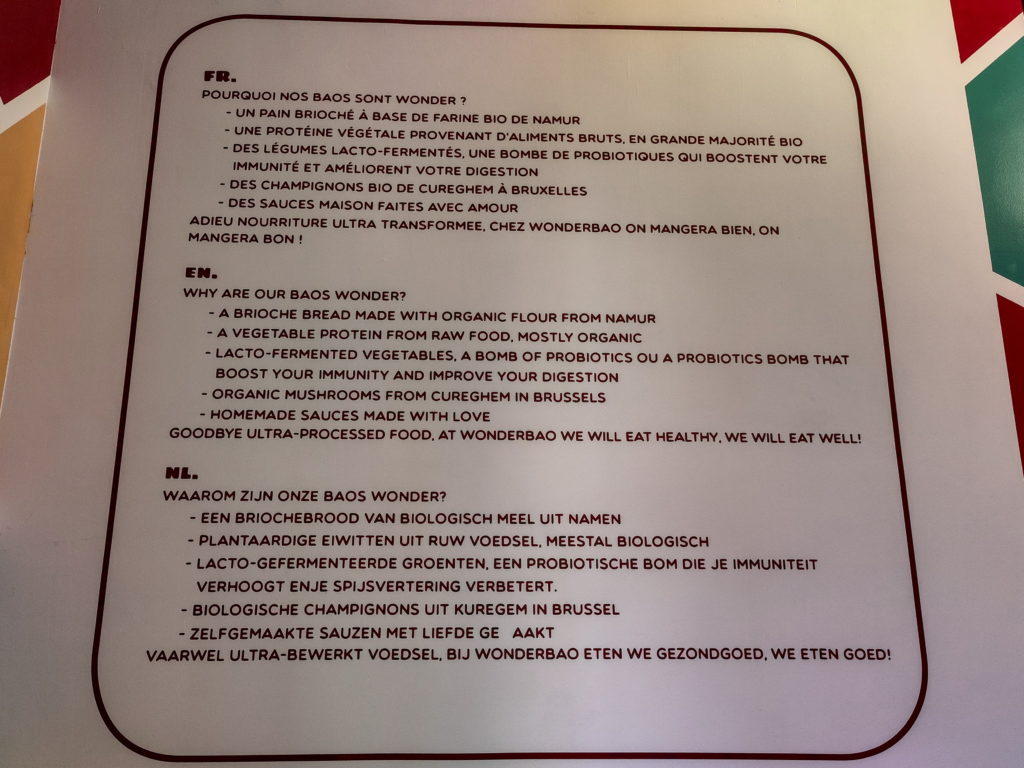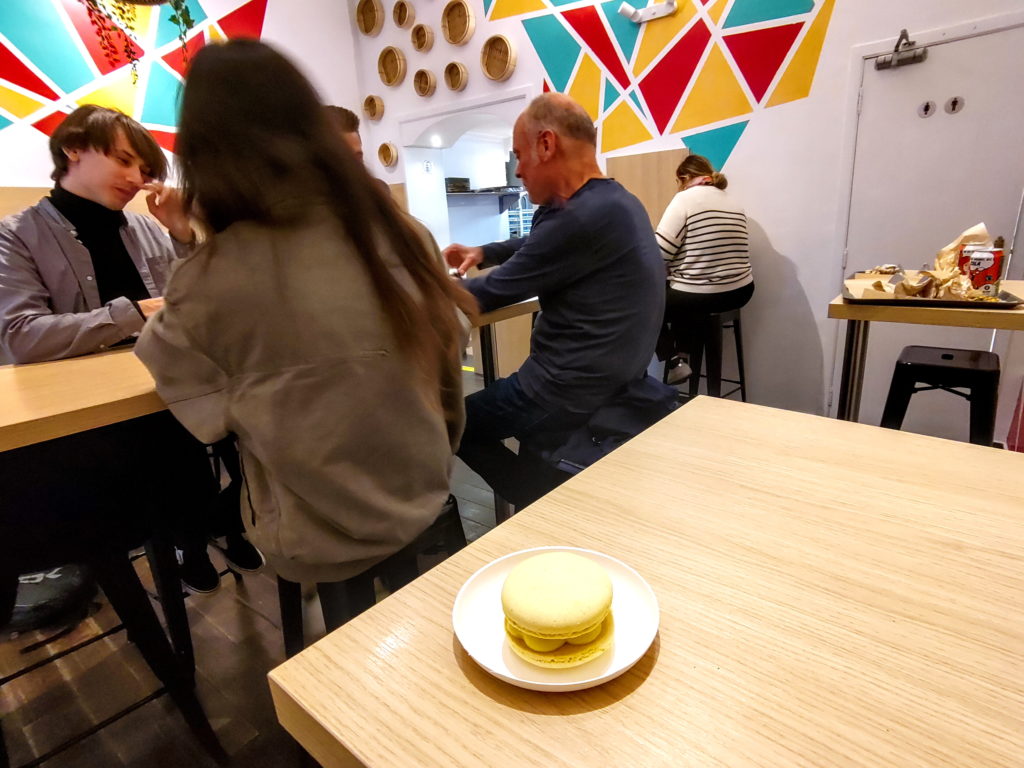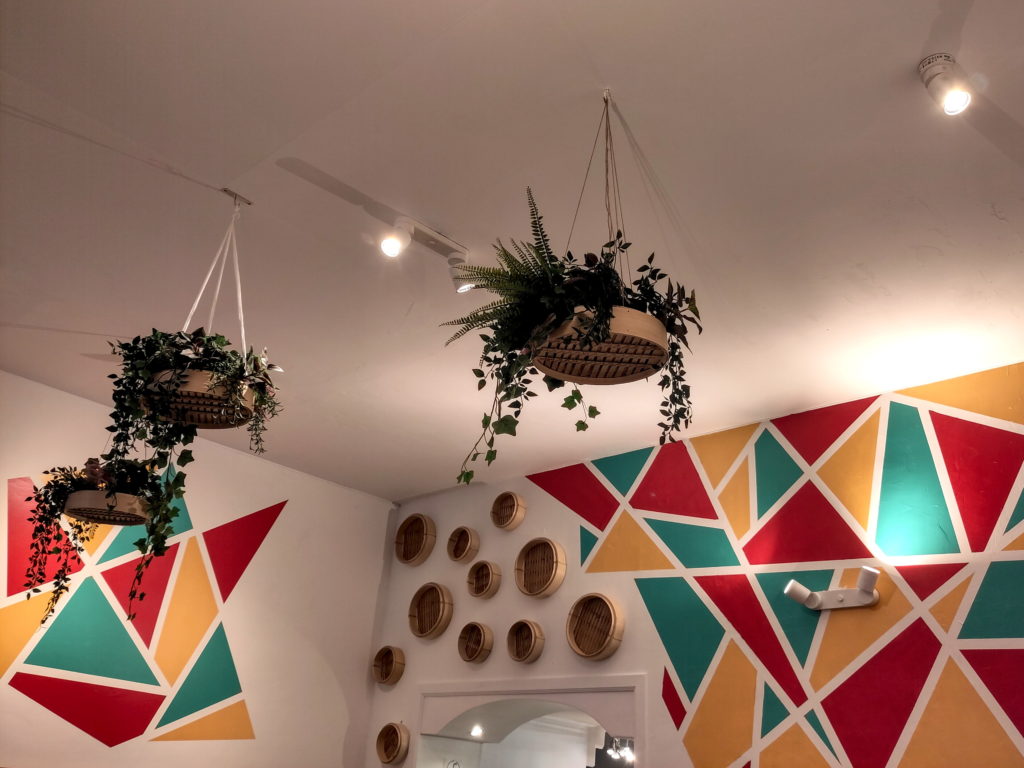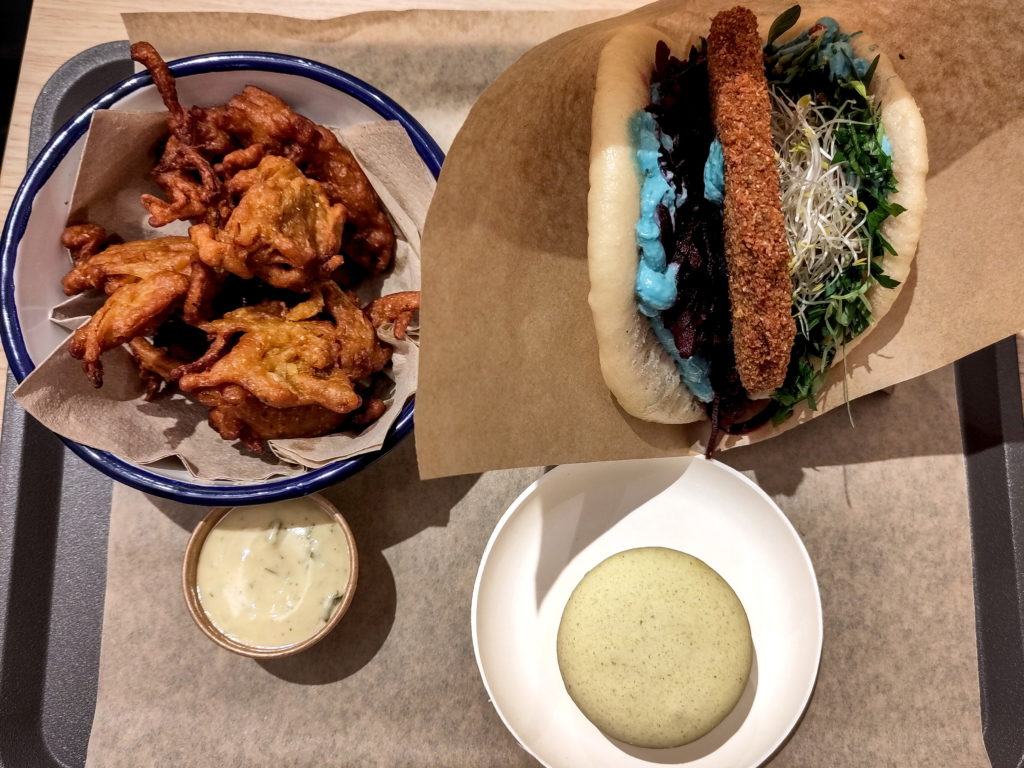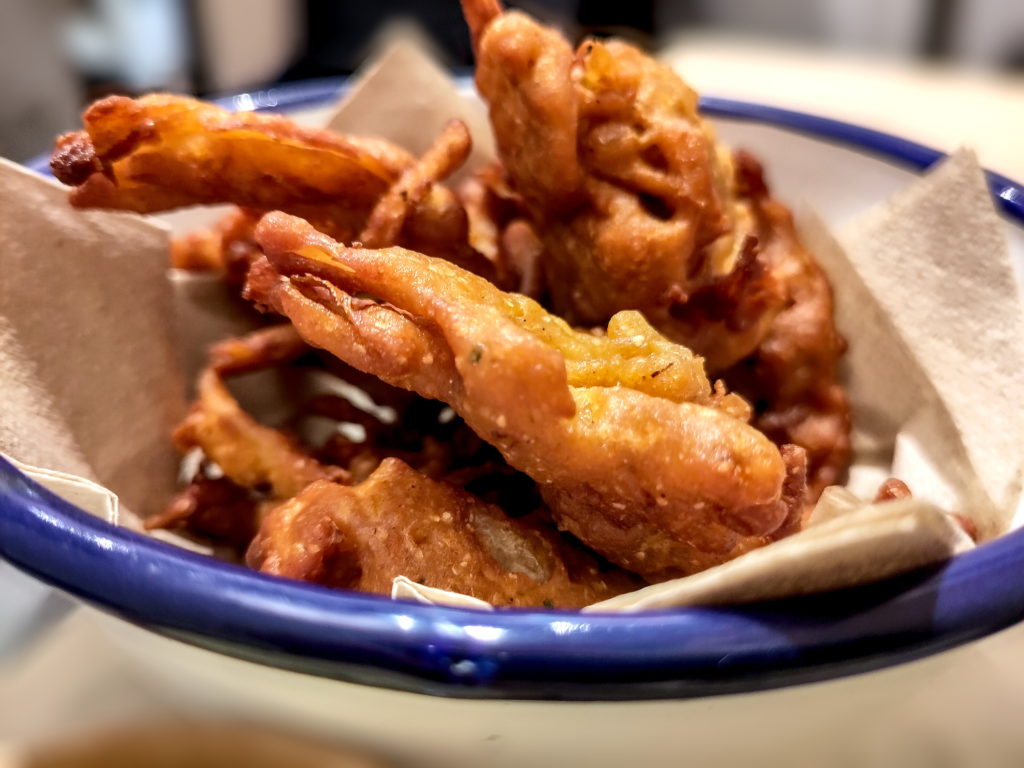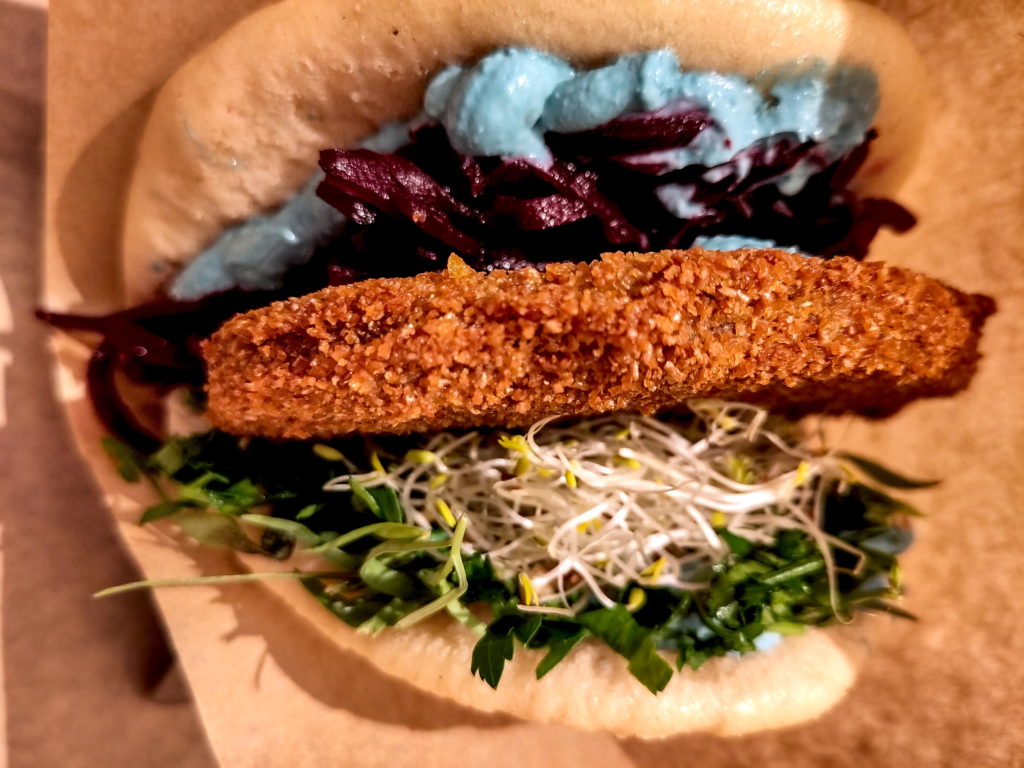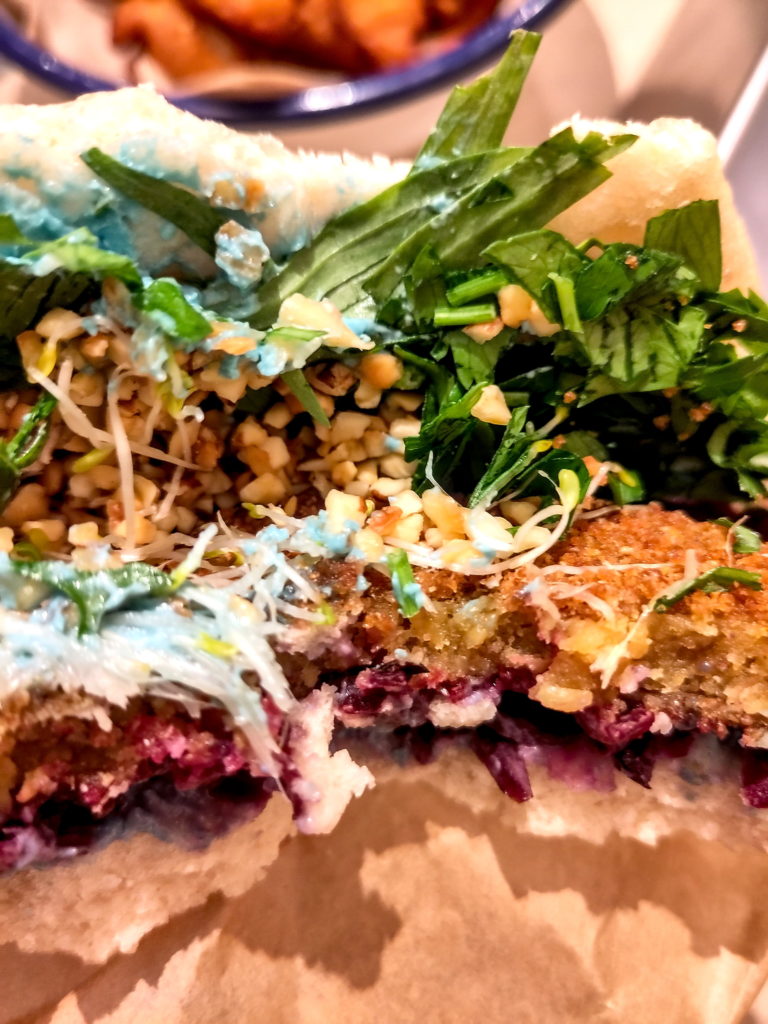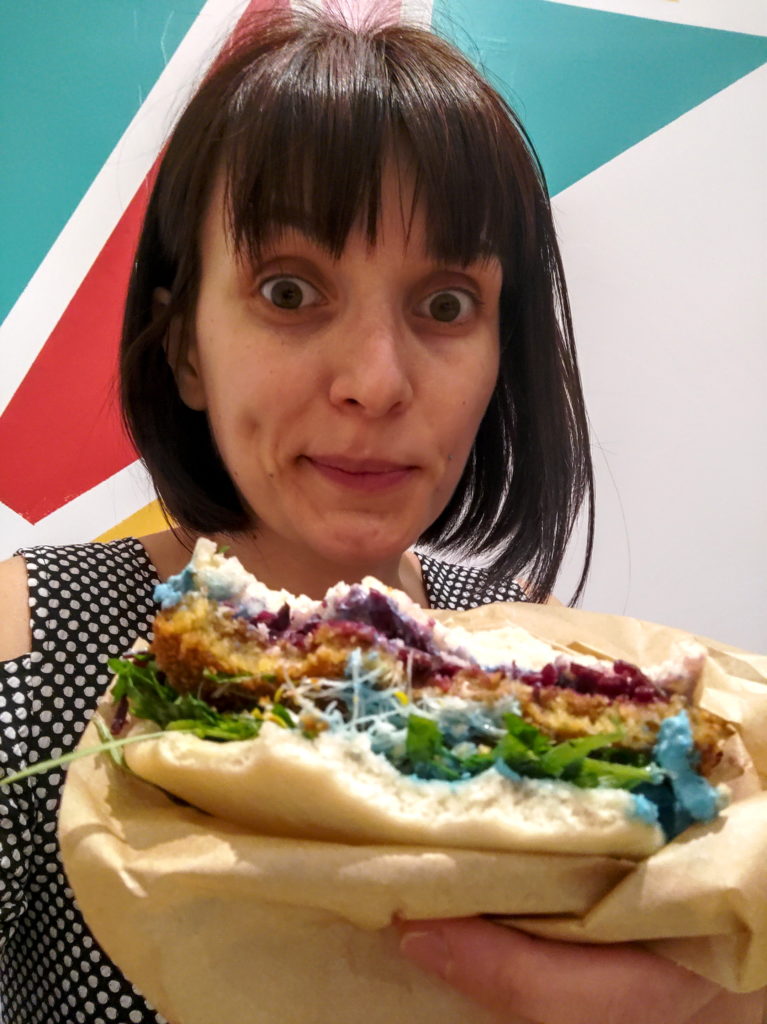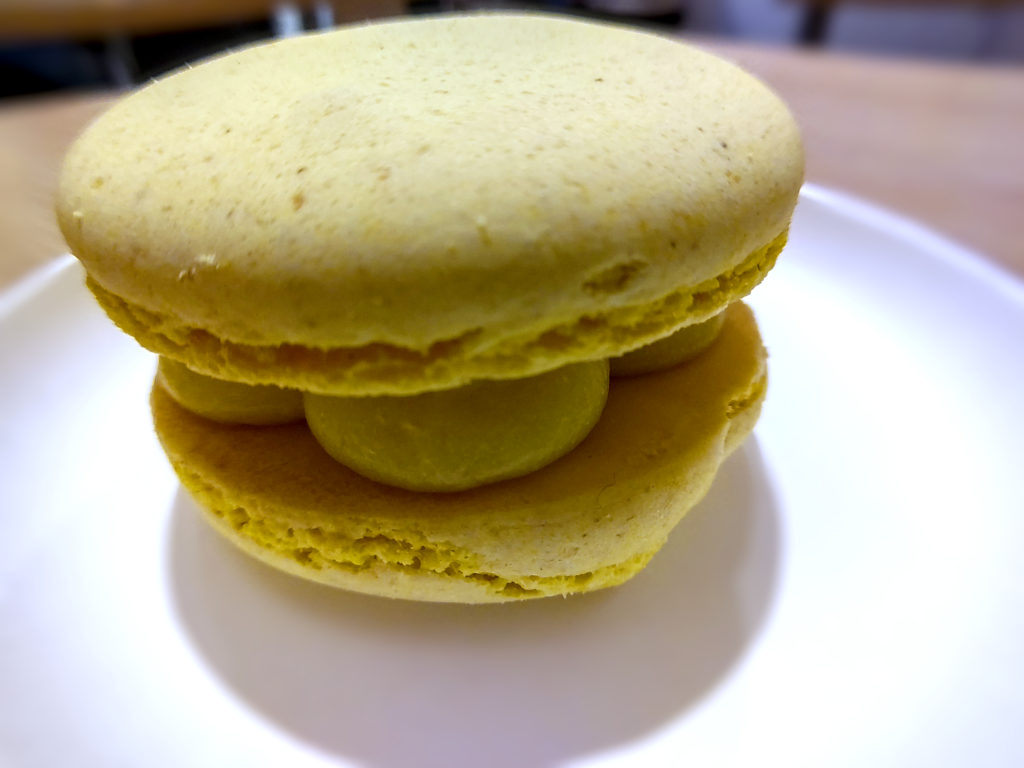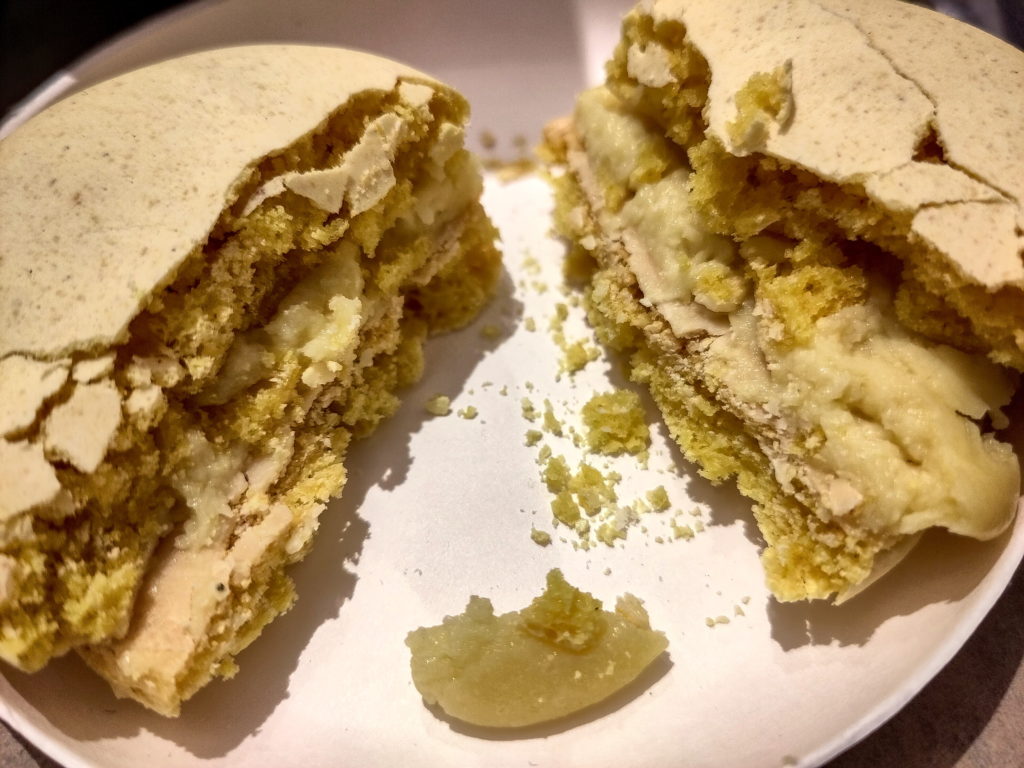It wasn't until the beginning of 2023 that I got to know the Chinese specialty called bao. I liked it enough to look for a recipe and test it 2-3 times with different ingredients. Even so, when I see vegan bao on menus, there's a good chance I'll choose it. Well, can you imagine what it was like when I discovered a vegan restaurant dedicated to this dish, just 20 minutes from where I was staying in Brussels? Enthusiasm at first and ecstasy later on.
Wonderbao is located on a semi-pedestrian street, with many bohemian terraces, guarded by some strangely-shaped trees. I can't tell if they are affected by some disease or that's just how they look. I enter the restaurant and notice that there are only a few tables taken. Perfect, because I made no reservation.
I stop right in front of the bar, the place where you can order. As I go through the painted menu on the wall, I realise it is hard for me to choose, as there are too many exceptional combinations. I ask for the recommendation of the person standing behind the sweets display fridge and I end up ordering a blue sheitan bao and some fusion bahji. I have to pay 15 euros, so I hand over a 20 Euro banknote. While the waiter runs to the kitchen to look for some coins, I spot a macaron delight. I communicate through signs that I want something else, so she comes back and tells me that I have to pay another euro. I hand over another 20 Euro banknote and I end up paying less as they do not have enough cash for the change. Only later on do I realise that I had two euros lost in my purse, so I can pay the debt.
Another element that has been painted directly on the wall is this story lying next to the menu, in the bar area. From the texts, written in French, English and German, you learn that although you are in a fast food restaurant, they are using organic locally grown ingredients, which have been carefully prepared so that they have multiple health benefits. I can't wait!
How’s the atmosphere at Wonderbao
The waiter is super nice. It is easier for her to speak French than English, but no matter the language, she’s really trying to please customers. As usual, I sit in a corner to see everything that is going on. The waiter comes to each table, asking if we can wait for the food for 25 minutes, as there are a lot of orders. I like her. She takes the orders, clears the tables, juggling between tasks with an obvious joy. You can tell that you are in a small authentic place, even if the resources are limited.
There is an open-type kitchen. Wow! I admire the chefs who feel comfortable enough to cook in front of their guests, as you have to be super organised and keep everything extra tidy to have returning customers.
I take a glance at dishes on the neighbouring table and raise my expectations for my following dinner.
When I realise that I might seem a bit intrusive, I switch to my phone and look at pictures of the place. I find some other mouth-watering desserts, but I remind myself that I do not want to waste food. When I look up, I notice that the small restaurant is now full.
Modern design with traditional elements
I try to take a few pictures of the Chinese inspired design, without capturing people’s faces. They used bamboo steaming trays as plant hangers. They look nice, but it would have been even nicer with some natural plants. Several other bamboo steamers complement the colourful geometric shapes painted on the walls.
The dishes, a delight for all the senses
As I return to my table, the food arrives. It looks insanely good. First I take a ton of pictures, and only then I dare to taste. I start with the side dish, more precisely with the sauce accompanying the fusion bahji. It is just divine. I can identify the taste of Wasabi and notice the visual impact of the shopped green herbs. The onions are optimally cooked, neither too raw for my taste nor burnt. The combination is actually wonderful.
But let's move on to the main course. Have you seen what it looks like? I scan the layers of this lovely bao from top to bottom and try them out one by one. My taste buds explode as soon as I put some of the grass-looking greens in my mouth. Tarragon and parsley. What a powerful combination and at the same time extremely pleasant for my own personal taste! Underneath this layer, a generous bundle of sprouts is adding some zing.
The star of the dish, the seitan, is awaiting the verdict. The crispy crust that covers it gives it some flavour, which seitan alone does not have by itself. If it were to be served as a schnitzel, it would have definitely needed to be marinated with some spices before frying. But, along with all the other existing flavours, it's well balanced.
Under the seitan, there is a pickled, sweet-and-sour beet salad, which contrasts beautifully with the bright blue sauce. Coloured with spirulina, it has definitely been fermented for a long time to achieve a rich yoghurt taste. In addition to the seitan crust, a handful of finely chopped almonds help bring some crunchiness to the texture.
All these ingredients are wrapped in a fluffy, sweet and super-elastic dough. Definitely a wonder bao! Clearly not to be wasted, so I saved a quarter of the bao, 3 onion wings and some sauce for later.
One last treat at WonderBao
Remember that I have also ordered dessert? It waited quietly on the table. The macaron has a similar texture to those made from egg white. The lemon cream is super smooth and it comes with a surprise element: small pieces of candied orange peel. Super refreshing and suitable after so many fried ingredients.
In the end, I feel really sorry that I do not have more petty money for tips. I thank both the waiter for serving, and the chef who was taking a break after several minutes of continuous work. I am very glad that the disappointment I felt with the previous Brussels restaurant is dissipating. I would definitely recommend WonderBao and come back if I have the chance.
